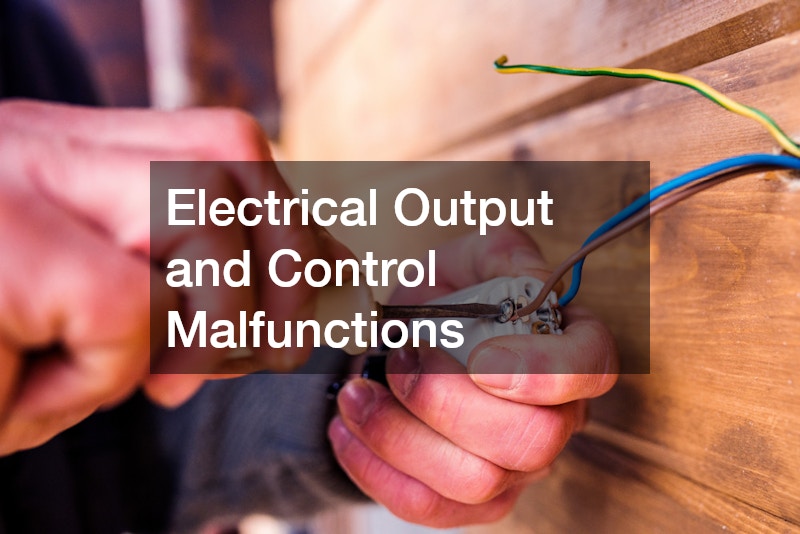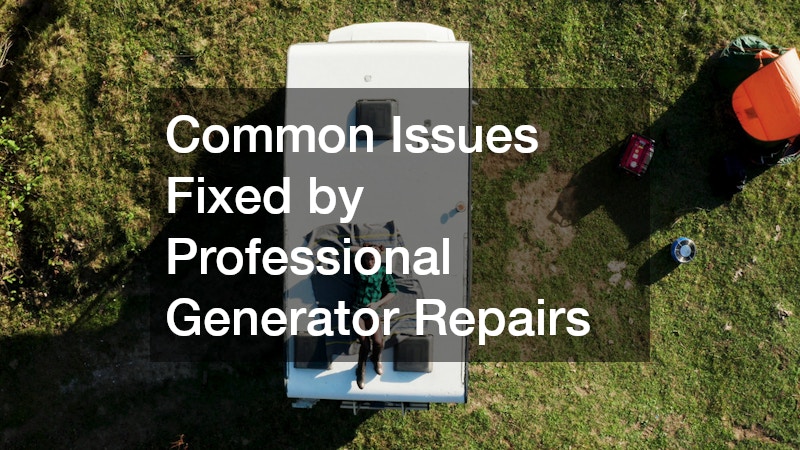Generators are the unsung heroes that keep homes, businesses, and essential services running when the power goes out. From storms to grid failures, a reliable generator ensures continuity, comfort, and safety. Yet, like any mechanical system, generators need regular maintenance and repairs to stay in peak condition. Over time, wear and tear, fuel problems, and electrical faults can reduce performance or cause sudden breakdowns.
Understanding the most common issues that professionals handle during generator repairs helps owners recognize when it’s time to schedule service. Addressing small problems early prevents expensive damage, extends equipment life, and ensures your backup power system is ready when you need it most.
Fuel System Problems
One of the most frequent causes of generator malfunction stems from fuel system issues. Whether the generator runs on diesel, natural gas, or propane, any disruption in fuel delivery can quickly shut down the unit or cause it to run inefficiently.
Fuel contamination is a common culprit. Over time, fuel stored in tanks can develop sediment, water accumulation, or microbial growth that clogs filters and injectors. When this happens, the generator might sputter, fail to start, or produce uneven power output. Fuel lines can also crack or leak, creating safety hazards and reducing efficiency.
Technicians typically start by inspecting fuel filters, lines, and tanks for debris or deterioration. They’ll drain or replace contaminated fuel and clean the system to ensure smooth operation. In many cases, professionals also recommend installing a fuel polishing system or using stabilizers to prevent future buildup. Regular inspections and clean fuel storage practices go a long way in keeping your generator’s engine healthy.
Battery Failure and Starting Issues
A generator’s battery is small but critical—it provides the initial power to start the engine. Unfortunately, battery-related issues are one of the top reasons generators fail during outages. Over time, batteries can lose their charge, develop corrosion on terminals, or experience internal damage from extreme temperatures.
If a generator doesn’t start, it’s often due to a weak or dead battery. Corroded connections can also interfere with voltage flow, making the starting system unreliable. For backup generators that sit idle for long periods, self-discharge can drain the battery even when it’s not in use.
During generator repairs, technicians test the battery’s voltage, clean terminals, and check the charger’s performance. They may also inspect the starter motor and solenoid to rule out electrical faults. Many service providers recommend replacing batteries every two to three years to prevent unexpected failures. Keeping terminals clean and testing the battery monthly can ensure your generator fires up the moment it’s needed.
Overheating and Cooling System Failures
Generators produce a significant amount of heat while running, which makes a functioning cooling system essential. Overheating can damage the engine, reduce efficiency, and even trigger automatic shutdowns. Common causes include low coolant levels, blocked radiators, faulty water pumps, or broken fan belts.
When coolant levels drop, air pockets can form in the system, disrupting circulation and reducing heat transfer. Dirt and debris clogging the radiator fins can also limit airflow, causing the temperature to rise rapidly. In liquid-cooled units, water pump or thermostat malfunctions often contribute to excessive heat buildup.
A professional inspection involves checking coolant levels, flushing the system, and cleaning the radiator. Technicians also verify that hoses are intact and that fans are spinning properly. In severe cases, they may replace worn gaskets or seals to prevent leaks. Routine maintenance of the cooling system not only prevents costly breakdowns but also ensures the generator operates efficiently under heavy loads.
Electrical Output and Control Malfunctions
A generator’s primary function is to produce stable electrical power—but several factors can cause fluctuations or total output loss. Faulty voltage regulators, damaged alternators, or loose wiring connections can interfere with performance. When electrical components degrade, the generator may produce inconsistent voltage or fail to transfer power properly to the connected circuits.
Symptoms of electrical issues include dimming lights, flickering equipment, or the generator shutting down unexpectedly. Faulty control panels are another common issue, especially in newer digital systems that rely on sensors and automatic transfer switches. Dust, moisture, and power surges can disrupt their operation, leading to inaccurate readings or failure to engage during outages.
Professionals use diagnostic tools to test voltage stability, inspect connections, and recalibrate sensors. They also examine transfer switches to ensure power flows seamlessly when the grid fails. These steps help prevent dangerous overloads and keep sensitive electronics safe. By resolving electrical and control problems early, technicians restore the generator’s ability to deliver consistent, dependable power.
Your generator is more than just a backup system—it’s peace of mind during emergencies. However, even the best models require attention to keep them running reliably. The most common issues technicians address include fuel system contamination, battery failure, overheating, and electrical malfunctions.
By understanding these warning signs, you can catch problems before they escalate and ensure your generator operates efficiently when you need it most. Regular inspections, professional maintenance, and timely generator repairs safeguard your investment and prevent costly downtime. Whether for your home or business, keeping your generator in top shape guarantees that when the lights go out, your power stays on.

